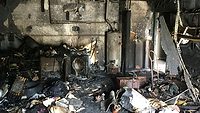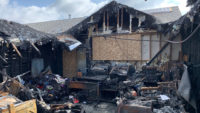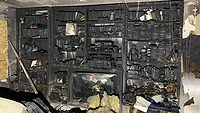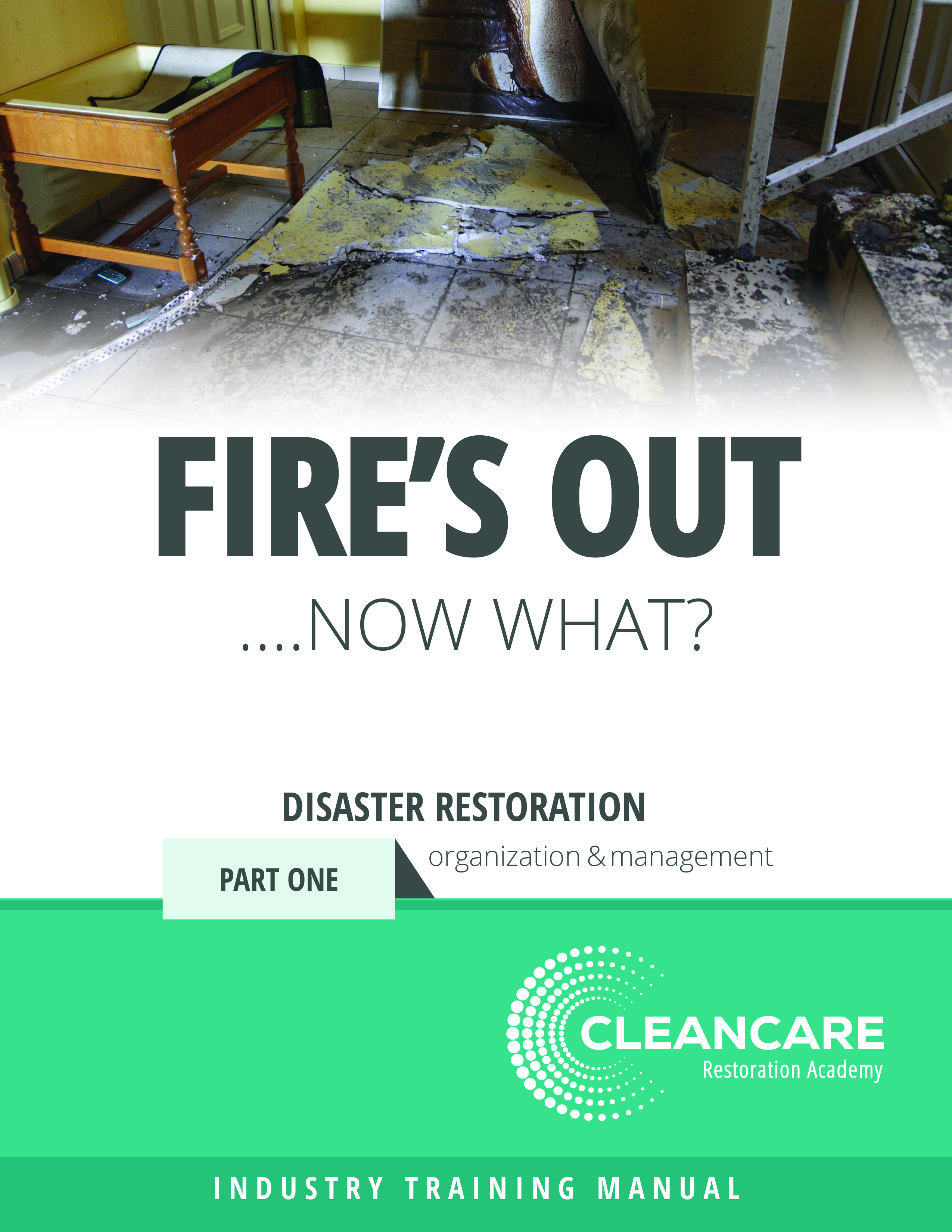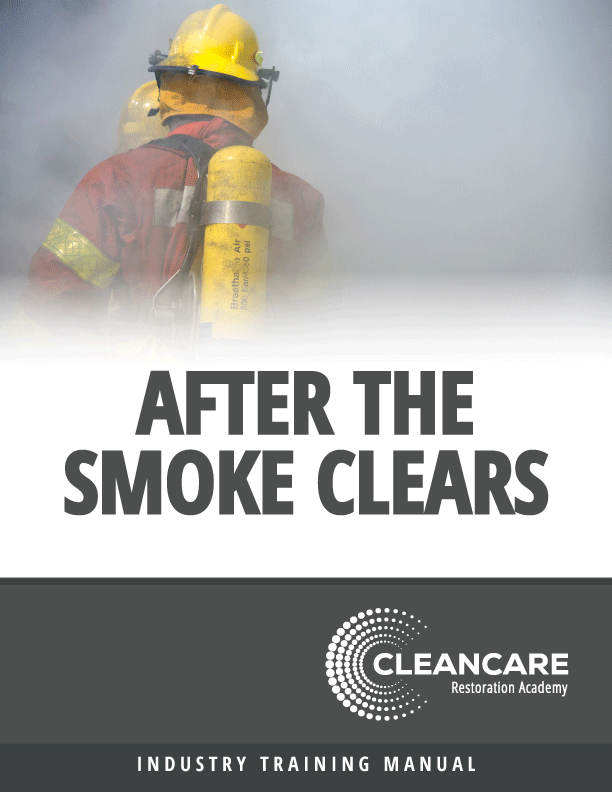Mastering Fire Restoration Estimation Part 3

All photos in this article are the courtesy of Sean Scott.
This is the third article in a series on estimating fire restoration jobs. Did you miss part one or two?
Mastering Fire Restoration Estimation Part 1
Mastering Fire Restoration Estimation Part 2
One area that often presents the greatest challenges to fire restoration practitioners is determining the scope of work needed to effectively deodorize a fire damaged structure. You can rest assured that anyone who has suffered damage to their home or building from a fire, will expect the job to be done right the first time and that nasty smoke odor will never return. For this reason and to guarantee your work, it is always a wise move to thoroughly investigate how far the smoke traveled by opening walls and ceiling cavities and including ample labor and equipment in case you run into unforeseen difficulties.
The last thing you want is a call back from an angry customer complaining of a smoke odor returning after they moved back into their home. In addition, insurance adjusters expect restorers to include in their estimates everything they need to do the job and won’t appreciate you sending supplemental estimates down the road because you overlooked steps, underestimated the job, or your deodorization methods failed.
It is important to keep in mind that every fire has its own DNA and not every smoke odor remediation project is handled in the same fashion. Factors such as the intensity of the fire, location, heat pressures, duration of the fire, composition of the fuels that burned, level of impact to structural members, type of construction, and an array of other issues may require different approaches and methods. One of the most common problems restorers encounter in fire restoration projects is locating sources of concealed smoke odor. Therefore, it is important to carefully inspect how the building is constructed and to expose any suspect areas where smoke could have infiltrated.
Safety First
Whenever you’re writing an estimate on a fire repair, always include a detailed list of proper protective equipment and any other safety related items needed to protect your workers. This may include respirators, Tyvek suits, eye protection, gloves and hardhats, as well as eye wash stations, fall harnesses, scaffolding, guard rails, temporary lighting, shoring, etc. Then once you have listed all the safety related items the job requires, you can start compiling the elements needed for the remediation work.
Media Blasting
Lumber is porous and can hold a lot of smoke odor. In some cases, you may need to use some form of media to blast the surfaces of smoke damaged lumber to remove the surface layer that holds the odor. There are a number of different types of media with varying costs to choose from that include:
- Dry ice
- Baking soda
- Sponges
- Walnut shells
- Aluminum oxide
- Corn cobs
- Steel shot
- Glass beads, etc.
Using abrasive or hard media to clean concrete and masonry surfaces often generates large quantities of silica dust.
In some cases, especially when cleaning concrete, stone, or masonry, liquid power washing may be the best option. If this is the case, you may need to include line items in your estimate to set containments, vacuum the runoff water from the floor surfaces, and then dispose of it. Using abrasive or hard media to clean concrete and masonry surfaces often generates large quantities of silica dust, which is a known carcinogen, so proper precautions and additional steps will need to be taken and included in the estimate. No matter what method of media or pressure washing you choose, there is always going to be a significant amount of clean-up involved that needs to be considered.
Particulate Filtration and Cleaning
During the media blasting process, you need to include equipment to filter the airborne particulate generated by the blasting. You also need to consider whether containments will be needed to prevent cross-contamination of unaffected rooms or spaces. Air scrubbers with proper filters or negative air machines are used to accomplish this. Although air scrubbers do an excellent job removing particulate in the air, it is inevitable that some soot, char, ash, wood dust or other debris will still settle on surfaces. Here HEPA vacuuming will be an effective way to remove debris from surfaces prior to encapsulation.
NOTE: Most encapsulant manufacturers require that their products be applied over clean and properly prepared surfaces, so allow enough labor time to clean thoroughly prior to application.
Heat and Humidity
In some cases, the use of electric heaters to elevate the indoor temperature can help with the deodorization process. Increasing heat and humidity can accelerate off-gassing, which can further reduce smoke odor emissions. If your project requires the use of heaters, air movers, or humidifiers, explain why you need them and how long they will be needed on the project.
Odor Neutralizing Gases
 Many restorers use oxidizing gases such as ozone, hydroxyls, chlorine dioxide or other chemicals to help neutralize smoke odors. Although they may be effective in neutralizing some combustion byproducts, they don’t work on all odors. In fact, some oxidizers react with certain chemicals and VOC’s to create unintentional hazardous byproducts. If you feel that using oxidizing gases will be worthwhile, be sure to include the proper labor and equipment in your estimate to ensure that any unwanted gases or byproducts are vacated. In addition, include labor to thoroughly clean each piece of equipment after use.
Many restorers use oxidizing gases such as ozone, hydroxyls, chlorine dioxide or other chemicals to help neutralize smoke odors. Although they may be effective in neutralizing some combustion byproducts, they don’t work on all odors. In fact, some oxidizers react with certain chemicals and VOC’s to create unintentional hazardous byproducts. If you feel that using oxidizing gases will be worthwhile, be sure to include the proper labor and equipment in your estimate to ensure that any unwanted gases or byproducts are vacated. In addition, include labor to thoroughly clean each piece of equipment after use.
Odor Counteractants and Encapsulation
Prior to sealing and encapsulating smoke damaged materials, restorers often use foggers or apply an odor counteractant spray to surfaces. These steps are estimated either by cubic foot of air being treated (foggers) or square feet of application (wet spray). Once this process is complete, the final step is to encapsulate the affected materials. This is typically estimated on a square foot basis of the areas that need to be encapsulated and may require more than one coat.
Lastly, you may want to add a layer of liability protection similar to what is customarily done after mold and asbestos remediation projects. Include an allowance in your estimate to have a third-party environmental testing company perform air and surface sampling before you begin rebuilding or installing new materials. If the testing shows elevated levels of fire related VOC’s, soot, char or ash, you may need to reclean and retest. If you pass, you will have a written record that your remediation work was done successfully and to industry standards.
Looking for a reprint of this article?
From high-res PDFs to custom plaques, order your copy today!




